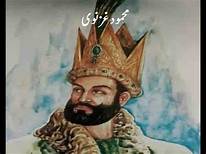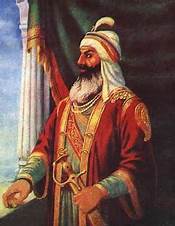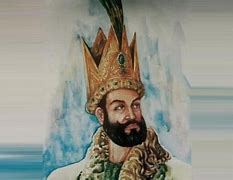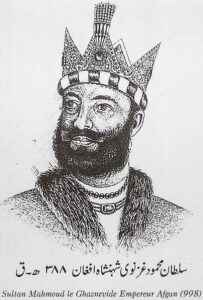Sultan Mahmood Ghaznavi
9 min read
King Mahmood Ghaznavi:
King Mahmood Ghaznavi (971-1030) was a Turkic Muslim victor who governed the Ghaznavid Domain from 997 to 1030. He was one of the best Muslim commanders of his time, and his victories broadened the Islamic domain from Focal Asia to the Indian subcontinent.
Mahmood was brought into the world in Ghaani, Afghanistan, in 971. He was the child of Ruler Sebuktegin, the pioneer behind the Ghaznavid Realm. Mahmood succeeded his dad as ruler in 997, and he immediately set about growing the realm.
Early History:
Mahmood’s most memorable significant victory was the Samanid Realm, which administered a lot of Focal Asia at that point. He crushed the Samanids in 999, and he attached their domain. Mahmood then directed his concentration toward the Indian subcontinent. He attacked India multiple times, in 1001, 1008, 1011, and 1026. For each situation, he crushed the Hindu leaders of India, and he pillaged their urban communities.

Mahmood’s successes carried incredible abundance to the Ghaznavid Domain. He utilized this abundance to assemble mosques, libraries, and emergency clinics. He additionally belittled artistic expression and sciences, and he pulled in researchers and writers from everywhere the Muslim world to his court.
Mahmood was a perplexing and questionable figure. He was a splendid military commandant, yet he was likewise a savage champion. He obliterated numerous Hindu sanctuaries and altars, and he slaughtered large number of individuals. Nonetheless, he was likewise a supporter of human expression and sciences, and he assisted with spreading Islam to new regions.
Mahmood passed on in Ghazni:
Mahmood passed on in Ghazni in 1030. He was prevailed by his child, Masud I. The Ghaznavid Domain kept on thriving for a very long time after Mahmood’s demise, however it ultimately declined and was vanquished by the Seljuk Turks in the eleventh hundred years.”
King Mahmood Ghaznavi (971-1030) was an unmistakable Turkic Muslim vanquisher who controlled the Ghaznavid Domain from 997 to 1030. As one of the best Muslim commanders of his time, he extended the Islamic domain from Focal Asia to the Indian subcontinent.

Brought into the world in Ghazni, Afghanistan, in 971, Mahmood was the child of King Sebuktegin, the organizer behind the Ghaznavid Realm. Taking the lofty position in 997, Mahmood quickly put his focus an on growing the domain’s area.
His most memorable significant success was the Samanid Domain, a strong element in Focal Asia at that point. In 999, Mahmood crushed the Samanids, attaching their domain into his extending realm. Following this victory, he directed his concentration toward the Indian subcontinent, sending off four attacks in 1001, 1008, 1011, and 1026. On each event, he arose successful against the Hindu leaders of India, accumulating extraordinary abundance through the looting of their urban areas.
The Crown Jewels.
The crown jewels from Mahmood’s triumphs advanced the Ghaznavid Domain, empowering him to subsidize the development of mosques, libraries, and emergency clinics. Furthermore, he ended up being a benefactor of human expression and sciences, drawing in researchers and writers from across the Muslim world to his court.
Mahmood was a mind boggling and disputable figure. While he displayed splendid military ability, he likewise procured a standing as a savage victor. Numerous Hindu sanctuaries and sanctums succumbed to his missions, and he was liable for the slaughter of thousands of individuals. In any case, he assumed an essential part in spreading Islam to new districts and encouraging social trades.
The King died in Ghazni in 1030, and his child, Masud I, succeeded him. The Ghaznavid Domain kept on thriving for quite a long time after Mahmood’s passing, however it at last declined and fell subject to the Seljuk Turks in the eleventh hundred years.
Promotion in Khurasan:
Mahmood Ghaznavi, brought into the world in 971 Promotion in Khurasan, was the child of Abu Mansur Sabuktigin, a Turkish slave warrior to support the Samanid ruler. In 994 Promotion, Mahmood went with his dad in the success of Ghazni during a time of flimsiness for the Samanid Realm. Taking control in 998 Promotion, Mahmood turned into the leader of Ghazni and later vanquished Qandahar.
In 1001 Promotion, he started a progression of military missions that persevered until his demise in 1030 Promotion. These missions were driven by strict enthusiasm against the Fatimid Shiites and non-Muslims, including Buddhists, Jains, and Hindus. Mahmood of Ghazni acquired a standing as a strong military commandant, effectively sending off seventeen campaigns into South Asia. In these fights, he confronted and crushed powers drove by Jaipal, Annadpal, Tarnochalpal, Kramta, as well as joint Hindu Rajas and Maharajas, constraining them to withdraw because of his essential brightness as a general.
Tactical Missions:
Nonetheless, Mahmood’s tactical missions likewise made him a dubious figure throughout the entire existence of South Asia. He eminently annihilated the Krishna Janmabhoomi Sanctuary (known as Kesava Deo Sanctuary) in Mathura in 1017 Promotion. Alongside a few other Hindu and Buddhist sanctuaries. His most notorious demonstration was the obliteration and plundering of the venerated Somnath Sanctuary in 1025 Promotion. Bringing about the passings of north of 50,000 individuals safeguarding it. As an outcome, Mahmood Ghaznavi is to a great extent saw as a thief and bandit by numerous non-Muslims in South Asia.

Regardless of this, Mahmood of Ghazni was commended as a gallant figure by South Asian Muslims. He debilitated adjoining rulers, keeping them from going after the recently settled Muslim state. The crown jewels of war were utilized to solidify the realm’s power. Following the triumph of Multan and Lahore in 1021, Punjab turned into a piece of his domain, with Lahore filling in as the common base camp. Subject to his authority, Ghazni and Lahore became focuses of learning and culture, adding to the foundation of a solid Muslim realm that went on for quite a long time. Moreover, Mahmood’s tactical missions uncovered the shortcomings of Hindu Rajas, empowering future Muslim pioneers to overcome India.
Extraordinary Supporter:
Mahmood Ghaznavi was an extraordinary supporter of picking up, drawing in researchers and erudite people to his court, including the writer Firdosi, student of history Behqi, and researcher Al-Biruni. Ghazni turned into a significant and lovely city inside the Islamic world, and Lahore likewise prospered as a focal point of learning and culture.
Regardless of being profoundly strict, Mahmood had regard for different beliefs. In Ghazni, an impressive Hindu populace delighted in strict opportunity, for certain Hindus in any event, serving in his military. Mahmood’s assaults on Hindu sanctuaries in India were propelled more by political reasons than strict ones.
Mahmood Ghaznavi died.
Mahmood Ghaznavi died on April 30, 1030, Promotion, abandoning a perplexing heritage as a winner and supporter of learning, venerated by some and scolded by others.
Family:
Mahmud Ghaznavi wedded the girl of Abu’l Haret Ahmad, and they were honored with twin children, Mohammad and Ma’sud. Progressively, the two children would climb to the high position after Mahmud’s standard. His grandson through his child Mas’ud, Maw’dud Ghaznavi, later turned into the leader of the domain. Mahmud’s sister, Sitr-e-Mu’alla, wedded Dawood canister Ataullah Alavi, otherwise called Ghazi Salar Sahu, and their child was Ghazi Saiyyad Salar Masud.

Imperative among Mahmud’s sidekicks was Malik Ayaz, a Georgian slave, about whom sonnets and stories have been told.
Early Vocation:
In 994, Mahmud joined his dad Sabuktigin in catching Khorasan from the renegade Fa’iq, supporting the Samanid Emir, Nuh II. During this period, the Samanid Realm confronted unsteadiness with moving political tides and fights for control among different groups. Including Abu’l-Qasim Simjuri, Fa’iq, Abu Ali, General Bekhtuzin, as well as the adjoining Buyids and Kara-Khanid Khanate.
Rule:
Sabuktigin died in 997, and his child Ismail succeeded him as the leader of the Ghaznavid administration. The justification for Sabuktigin’s decision of Ismail as main successor over the more experienced. And more seasoned Mahmud is unsure, yet it very well may be because of Ismail’s mom being the little girl of Sabuktigin’s old expert, Alptigin. Mahmud, in any case, revolted and, with the assistance of his sibling Abu’l-Muzaffar. The legislative head of Bust, crushed Ismail in the next year at the Skirmish of Ghazni, overseeing the Ghaznavid realm. In 998, Mahmud gave recognition to Amir Abu’l-Harith Mansur b. Nur II in Balkh and delegated Abu’l-Hasan Isfaraini as his vizier. He then, at that point, left on missions to vanquish the Kandahar district, trailed by Bost (Lashkar Gah), which he changed into an invigorated city.

Mahmud’s aspirations stretched out to North India, where on 28 November 1001, his military prevailed over Raja Jayapala of the Kabul Shahis at the Clash of Peshawar. He additionally ousted Khalaf ibn Ahmad in 1002, finishing the Saffarid administration during his attack of Sistan. Mahmud then directed his concentration toward the fruitful grounds of the Punjab district in southeastern Hindustan.
Mission in the South Africa:
His most memorable mission in the south was against an Ismaili state, laid out at Multan in 965 by a da’i from the Fatimid Caliphate to earn respect with the Abbasid Caliphate. Mahmud additionally drew in with the Fatimids somewhere else. Simultaneously, Jayapala looked for retribution for a past military loss because of Mahmud’s dad, losing a significant area all the while. Anandapala, Jayapala’s child, proceeded with the battle for retribution after his dad’s self-destruction. In any case, his strong alliance confronted rout when his elephant turned around during the fight at a crucial point in time. Eventually getting Mahmud’s triumph at Lahore in 1008 and conceding him command over the Shahi domains of Udbandpura.
Personality:
King Mahmud viewed himself as “the Shadow of the God on the planet,” employing outright power with his will being the law. His fastidious nature drove him to give extraordinary consideration to even the littlest subtleties. Expressly administering the functions of each and every division in his organization.
At the point when it came to designating priests, Mahmud settled on every one of the choices himself without continuously looking for guidance from his wazir (boss consultant) or diwan. Be that as it may, his strict convictions likewise supported meeting among Muslims on different issues. Regardless of this, he frequently held onto doubts towards his pastors, particularly the wazir, and was broadly cited as saying, “wazirs are the foes of kings…”
To watch out for issues inside his realm, Ruler Mahmud kept an organization of various covert operatives known as Mushrifs. These government operatives were directed by a unique office inside his diwan.
Mahmud’s affection for writing, especially verse, made him a benefactor of human expression. He would frequently invest energy in the organization of skilled writers, whether in his castle or the regal nursery. He showed incredible liberality towards them, energetically and liberally remunerating them for their works in light of their ability and worth.
Wars:
Ruler Mahmud of Ghazni’s tactical missions were set apart by their desire, scale, and vital splendor. He was one of the best Muslim commanders of his time. Extending the Ghaznavid Domain’s impact from Focal Asia to the Indian subcontinent. How about we dive into a portion of the vital subtleties of his conflicts:
Early Triumphs:
Mahmud’s tactical profession started with missions to unite and grow the regions of the Ghaznavid Realm. He went with his dad, Sabotaging, in catching Khorasan from the agitator Fa’iq on the side of the Samand Emir, Nuh II.
Triumph of Ghazni and Qandahar:
After the passing of Sabuktigin in 997, Mahmud succeeded him as the leader of the Ghaznavid administration. He immediately affirmed command over Ghazni and afterward vanquished Qandahar, further fortifying his situation.
Center around North India:
Mahmud’s most prominent and getting through military undertakings were his intrusions of the Indian subcontinent. He set out on a progression of missions to loot the well off sanctuaries and urban communities of northern India.
First Indian Missions:
In 1001 Promotion, Mahmud sent off his initial military mission into North India. He confronted Raja Jayapala of the Kabul Shahis in the Skirmish of Peshawar and arisen successful, getting assets and abundance for his realm.
Attacking Sistan:
Mahmud’s aspirations stretched out past the Indian subcontinent. In 1002 Promotion, he attacked Sistan and eliminated Khalaf ibn Ahmad from power, really finishing the Saffarid line.





